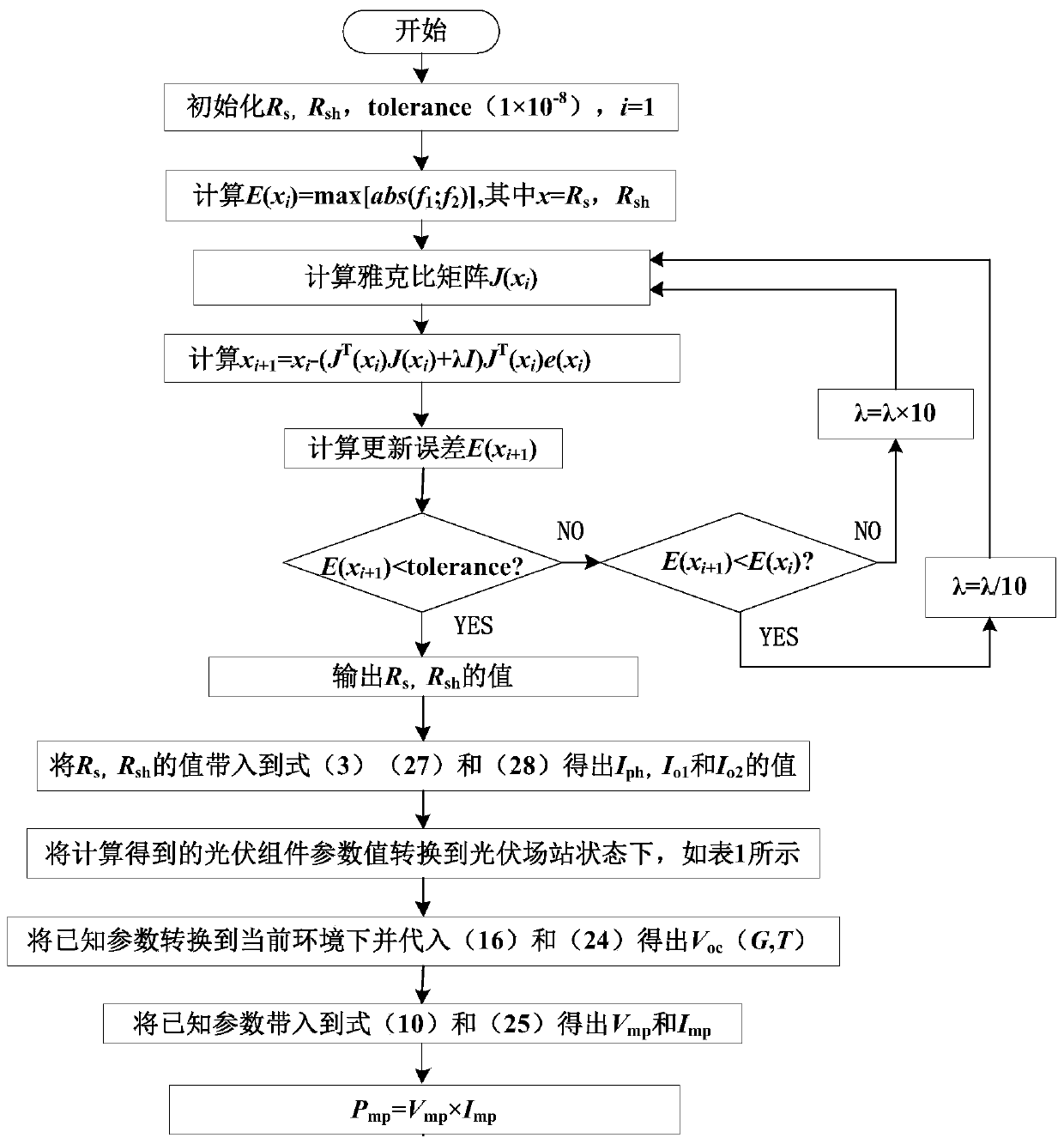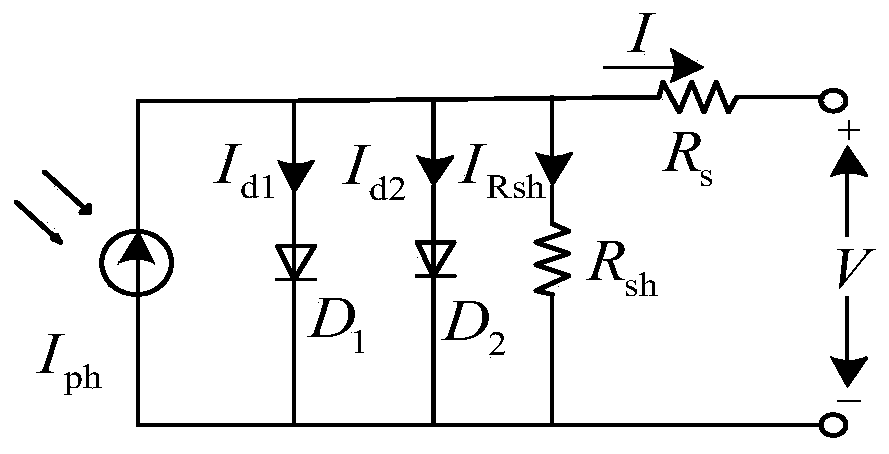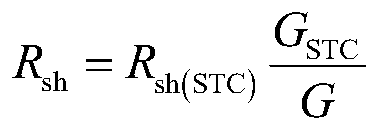Maximum power estimation method for photovoltaic power generation system
A photovoltaic power generation system, maximum power technology, applied in the direction of photovoltaic power generation, complex mathematical operations, single-network parallel feeding arrangements, etc., can solve the problems of accuracy, reduced accuracy, and low calculation difficulty that are difficult to solve by iterative convergence, and achieve faster Convergence speed and accuracy, and the effect of improving calculation speed
- Summary
- Abstract
- Description
- Claims
- Application Information
AI Technical Summary
Problems solved by technology
Method used
Image
Examples
Embodiment Construction
[0030] The Levenberg-Marquard method (Levenberg-Marquard, L-M) combines the advantages of the Gauss-Newton method and the gradient descent method, and improves the shortcomings of the two to ensure the speed and accuracy of iterative convergence.
[0031] The equivalent circuit of the photovoltaic cell double diode model is as figure 2 Shown:
[0032] The photovoltaic output current can be expressed by formula (1):
[0033]
[0034] I in formula (1) ph is the photogenerated current of the photovoltaic module; I o1 and I o2 is the diode reverse saturation current; I d1 and I d2 It is artificial to flow through the diode D 1 and D 2 Current; I Rsh is the current flowing through the parallel resistor; R s and R sh are series resistance and parallel resistance; V and I are photovoltaic cell output voltage and current respectively; A 1 and A 2 Respectively diode ideality factor; N s is the number of PV modules connected in series; V t =kT / q, k is Boltzmann's const...
PUM
 Login to View More
Login to View More Abstract
Description
Claims
Application Information
 Login to View More
Login to View More - Generate Ideas
- Intellectual Property
- Life Sciences
- Materials
- Tech Scout
- Unparalleled Data Quality
- Higher Quality Content
- 60% Fewer Hallucinations
Browse by: Latest US Patents, China's latest patents, Technical Efficacy Thesaurus, Application Domain, Technology Topic, Popular Technical Reports.
© 2025 PatSnap. All rights reserved.Legal|Privacy policy|Modern Slavery Act Transparency Statement|Sitemap|About US| Contact US: help@patsnap.com



